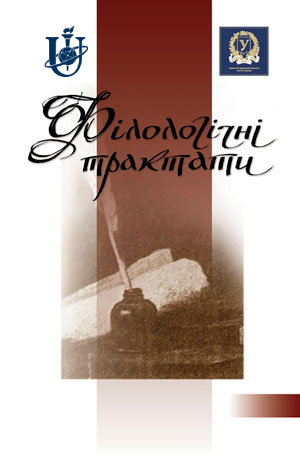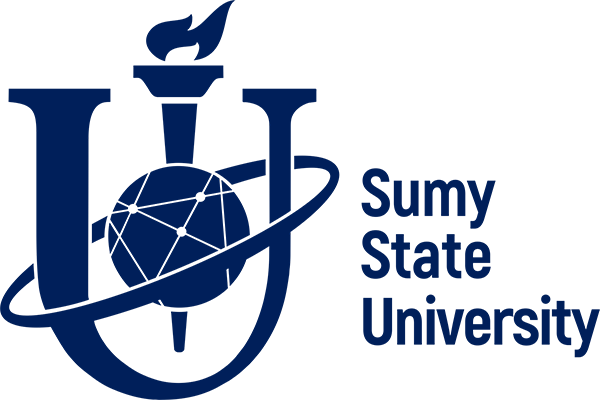LINGUOSYNERGETIC VECTOR OF STUDYING CONTEMPORARY UKRAINIAN DISCOURSE (ON THE MATERIAL OF “VOROSHILOGRAD” BY SERHIY ZHADAN)
Abstract
This study delves into the linguosynergetic approach to analyzing language within contemporary Ukrainian discourse, specifically through the lens of Serhiy Zhadan’s novel “Voroshilovgrad”. In this context, language is perceived as a complex adaptive system, characterized by nonlinear interactions and self-organization. By employing principles of linguosynergetics, such as open systems, non-linearity, self-organization, and bifurcations, the research uncovers the mechanisms through which language evolves in response to varying socio-cultural environments. The novel “Voroshilovgrad” serves as a quintessential example of this dynamic process. Through its narrative, the novel captures the essence of a society in flux, where linguistic elements are not merely passive conveyors of meaning but active participants in the creation of rich and multifaceted literary concepts. The concepts exemplify how language and culture are intertwined, each influencing and shaping the other in a continuous feedback loop. By integrating the principles of linguosynergetics, this study not only enhances our understanding of Zhadan’s work but also contributes to the broader field of linguistics and literary studies. It showcases the relevance of linguosynergetics in analyzing literary texts, particularly in contexts marked by rapid social and cultural transformations. Through this approach, the research underscores the intricate relationship between language and culture, affirming the significance of linguistic studies in interpreting and understanding the evolving narratives of post-Soviet societies. In sum, this study offers valuable insights into the dynamic processes through which language and culture interact, evolve, and coalesce to form the rich tapestry of contemporary Ukrainian discourseReferences
Aitchison, J. (2013). Language Change: Progress or Decay? Cambridge University Press.
Chomsky, N. (1965). Aspects of the Theory of Syntax. MIT Press.
Croft, W. (2000). Explaining Language Change. Longman.
Crystal, D. (1995). The Cambridge Encyclopedia of Language. Cambridge University Press.
Deacon, T. (1997). The Symbolic Species. W.W. Norton & Company.
Dombrovan, T. I. (2016). Linguistic synergetics: origin, key concepts and application. Notes on Romano-Germanic philology, 2, 95-107.
Ellis, N. (2008). The Dynamics of Second Language Emergence: Cycles of Language Use, Language Change, and Language Acquisition. The Modern Language Journal, 92(2), 232249. DOI:10.1111/J.1540-4781.2008.00716.X
Haken, H. (1983). Advanced Synergetics: Instability Hierarchies of Self-Organizing Systems and Devices. SpringerVerlag.
Hlazova, S., Vusyk, H., Lipycn, V., Pavlyk, N., Kovalenko, N. (2023). Status of the Ukrainian Language in the Context of Global Challenges and Military Aggression (Based on the Material of the Modern English-Language Press). World Journal of English Language, 13, 242. DOI: 10.5430/wjel.v13n2p242.
Hopper, P. J. (1987). Emergent Grammar. In J. Aske, N. Beery, et al. (Eds.), Proceedings of the Thirteenth Annual Meeting of the Berkeley Linguistics Society.
Humboldt, W. von. (1836). On Language: The Diversity of Human Language Structure and its Influence on the Mental Development of Mankind. Translated by Peter Heath, 1988, Cambridge University Press.
Kirby, S. (2002). Learning, Bottlenecks and Infinity: A Working Model of the Evolution of Syntactic Communication. In T. Briscoe (Ed.), Linguistic Evolution through Language Acquisition. Cambridge University Press.
Klymova, K. (2023). Update of the content of the course “business ukrainian” in the area of the development of modern science and education. The Scientific Issues of Ternopil Volodymyr Hnatiuk National Pedagogical University. Series: Pedagogy, 1, 127-133. DOI: 10.25128/2415-3605.23.1.16
Lightfoot, D. (2017). The Development of Language: Acquisition, Change and Evolution. Blackwell Publishing.
MacWhinney, B. (2015). Language Emergence. In B. MacWhinney & W. O’Grady (Eds.), The Handbook of Language Emergence. Wiley Blackwell.
Mandelbrot, B. (1982). The Fractal Geometry of Nature. W.H. Freeman and Company.
Pavlushenko, O. (2023). The semantic field of the “Russian-Ukrainian war” concept in the Ukrainian infomedia space of the war period. Current issues of linguistics and translation studies, 27, 89-93. DOI: https://doi.org/10.31891/2415-7929-2023-27-21
Prozhohina, I. (2022). The linguistic and didactic potential of the ethnocultural concept of VYSHYVANKA in teaching Ukrainian as a foreign language. Teaching Languages at Higher Educational Establishments at the Present Stage. Intersubject Relations, 41, 26-45. https://doi.org/10.26565/2073-4379-2022-41-025.
Sulyma, O., Vysotskyi, A. (2022). Linguistic concept of ‘love’ in modern Ukrainian songs. Studia z Filologii Polskiej i Słowiańskiej, 57, 2454. https://doi.org/10.11649/sfps.2454
Wedel, A. (2007). Feedback and Regularity in the Lexicon. Phonology, 24(1), 147185.
Wedel, A. (2007). Self-Organization in Phonology. Cambridge University Press.
Zhadan, S. (2010). Voroshilovgrad. Folio.













